We have all heard the trick of putting toothpaste on pimples to help reduce the redness and size of the blemish. But is there any science behind this age-old trick?
You will probably be familiar with the idea of putting toothpaste on your pimple to help it resolve. It can seem to be a convenient option if you are out camping or don’t have any other spot treatments on hand at home. The claim is that toothpaste helps to dry the pimple out, much like many other spot treatments, reducing the size and fullness of the pimple.
However, does this trick actually have any science behind it, or are we just getting our pillowcases smothered in that minty-fresh paste for no reason. So, let’s see what the research has to say about pimples and toothpaste.
Does Toothpaste Really Help Get Rid Of Pimples?
There are some potential reasons why this trick has been so widely spread. Toothpaste contains a number of ingredients that may help reduce the appearance of your angry pimple friend.
Drying ingredient
Toothpaste often contains ingredients such as bicarbonate soda, alcohol, and hydrogen peroxide. These ingredients can be drying to the skin which may help to reduce the appearance of an active pimple. However, drying ingredients can backfire, more on this in a bit.
Menthol
Toothpaste often contains menthol, responsible for the fresh-minty taste and feel you get when brushing your teeth. Menthol is used in many skincare products with increasing popularity. It is also used in many soothing creams and gels used for sports-related strains or sprains.
There is a reason for this, menthol may help to temporarily reduce pain and even swelling when applied to the skin. This may be one of the reasons why the toothpaste on the pimple trick has become so popular.
Antibacterial ingredients
Some toothpaste formulations contain mild antibacterial ingredients. While this is less common now, given research that suggests that the microbiome of the mouth is an important part of human health, some kinds of toothpaste still include this type of ingredient.
Given that this remedy is ages old, it may have been based on older toothpaste formulations that used these kinds of ingredients.
Why You Shouldn’t Use Toothpaste On Your Skin
Despite these potential benefits of toothpaste to reducing the size and appearance of pimples, there are many reasons why you shouldn’t reach for the toothpaste.
Irritating
Toothpaste is considered to be highly irritating to the skin. This is in part due to the fact that it’s formulated for teeth and in part due to the pH of toothpaste.
Some of the ingredients in toothpaste such as sodium lauryl sulfate can be irritating to the skin, especially when the blemish is open or the skin around it has been damaged. This can increase the irritation and pain associated with the blemish. This is obviously not the desired outcome.
The second thing to consider is that the pH of toothpaste is too basic for the skin. The skin’s pH usually sits in the range of 4.75-5.5 and is part of the way the skin protects itself.
The pH of the skin or the acid mantle barrier helps to protect the skin from bacterial overgrowth, yeasts, fungi, and infections. If you disrupt the skin’s mantle barrier it could lead to further issues with sensitivity and irritation.
Drying isn’t always best
Drying out a pimple can be beneficial for reducing its size and severity. Many spot treatments rely on this technique for treating pimples. However, drying out a pimple can cause overdrying which, for some people, can actually cause more breakouts. Sometimes, particularly with drier acne-prone skin types, it is better to stick to calming soothing ingredients and focus on hydration.
How Does Toothpaste Compare With Other Treatments?
There are many different pimple spot treatments on the market. They are formulated with sensitivity and irritation in mind. This is definitely the best way to go.
Formulated acne-prone or oily skincare products are a far better way to manage blemishes. Face washes, moisturizers, masks and spot treatments are far more gentle and effective than toothpaste.
However, if you are stuck in a pinch without your normal spot treatment. There are some better at-home remedies to try before toothpaste.
Tea tree oil has antibacterial and antifungal properties which may help to support the treatment of blemishes. It needs to be diluted into another oil such as jojoba in order to make it less harsh to the skin, but this is a good at-home alternative when used correctly.
Another at-home remedy is willow bark. Willow bark contains a natural form of salicylic acid, which is used in many spot treatment formulations. Salicylic acid helps to gently exfoliate the skin and may even help to reduce swelling and redness.
The Verdict
Through the science, we are able to see that the toothpaste remedy may have some roots in truth. However, given the potential side effects of using toothpaste on the skin, there are way better alternatives out there.
References:
Zirwas MJ, Otto S. Toothpaste allergy diagnosis and management. J Clin Aesthet Dermatol. 2010;3(5):42-47.
Shara M, Stohs SJ. Efficacy and Safety of White Willow Bark (Salix alba) Extracts. Phytother Res. 2015 Aug;29(8):1112-6
Carson CF, Hammer KA, Riley TV. Melaleuca alternifolia (Tea Tree) oil: a review of antimicrobial and other medicinal properties. Clin Microbiol Rev. 2006;19(1):50-62.







